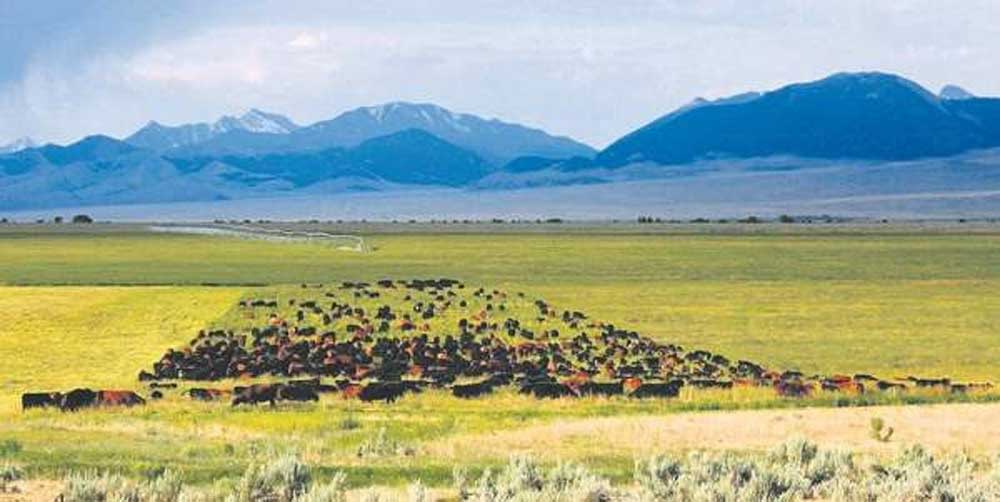USDA examines rotational grazing adoption nationwide
Published 1:31 pm Thursday, November 3, 2022

- Cattle feed under a management-intensive grazing system at Jim Gerrish's ranch in May, Idaho.
A study by USDA’s Economic Research Service finds 40% of cow-calf operations use rotational grazing and less than half of them use intensive rotational grazing.
Of the operations reporting using rotational grazing, 24% are practicing basic rotational grazing and 16% are practicing intensive rotational grazing.
The study also found rotational grazing adoption, seasonal use and stocking density vary by region and rotational grazing is more common in the Northern Plains, Western Corn Belt and Appalachian regions.
In addition, most basic rotational grazing systems are relatively simple, with five or fewer paddocks, an average paddock size of 40 acres or more and permanent fencing.
The Rotational Grazing Adoption by Cow-Calf Operations is one of the first nationally representative datasets to dive into the prevalence of rotational grazing in cow-calf operations and how producers implement the practice.
Rotating livestock through fenced grazing areas, or paddocks, is used to manage forage production, forage quality and environmental quality. But despite the breadth of support for rotational grazing, only limited information was available on its use.
USDA set out to fill in the information gap with a 2018 survey directed at cow-calf producers included in the 2018 Agricultural Resource Management Survey.
USDA released the findings of its study Nov. 1. The study provides details on how frequently grazing operations rotate livestock between paddocks, key system characteristics such as average paddock size and how outcomes such as stocking density and cost relate to system characteristics.
Other key findings:
• Retained stockers — operations that retain the majority of their calves through the initial feeder stage for later sale to feedlots — are the most likely to adopt intensive rotational grazing.
• Intensive rotational grazing operations have a significantly higher average stocking density than basic rotational grazing operations.
• Basic rotational grazing operations tend to have larger herds and more grazing land on average than either intensive rotational grazing operations or continuous grazing operations.
• Rotational grazing operations are more likely than continuous grazing operations to participate in Environmental Quality Incentives Program and Conservation Stewardship Program.
• The Appalachian region, with the smallest average grazing acreage per operation, is the only area in which intensive rotational grazing is more common than basic rotational grazing.
• In the Delta states and Southeast, a greater share of rotational grazing operations practice year-round rotational grazing.
• In each region, the stocking density for intensive rotational grazing operations is higher than that for basic rotational grazing operations.
• The Delta states and Southeast region had the most densely stocked grazing land.
• Intensive rotational grazing systems tend to have more paddocks and smaller average paddock size than basic rotational grazing systems.
• About 46% of intensive rotational grazing operations only spend an average of one hour a week moving their cattle, compared to about 36% of basic rotational grazing operations.
• Rotational grazing operations using four or more rotations per paddock per year are more likely to spend three or more hours a week moving cattle.
The report was authored by Christine Whitt, ERS agricultural economist, and Steven Wallander, ERS environmental economist. It can be found at https://www.ers.usda.gov .






